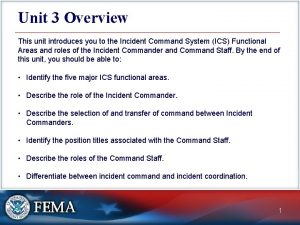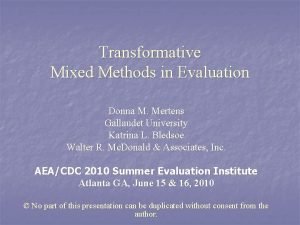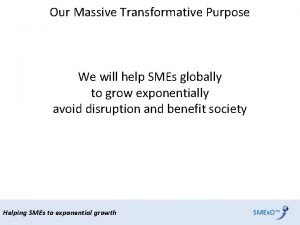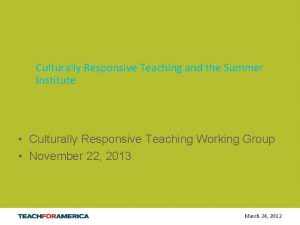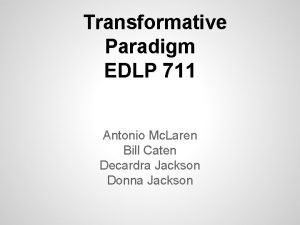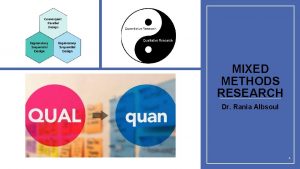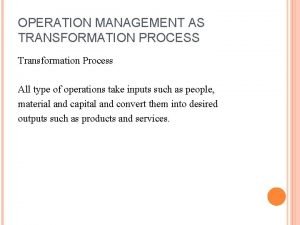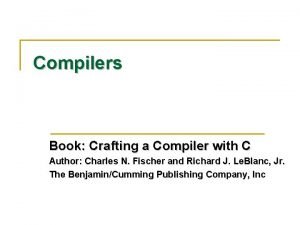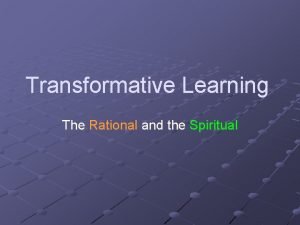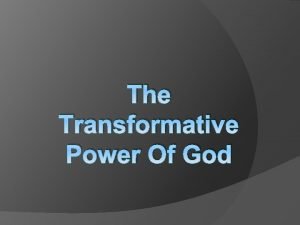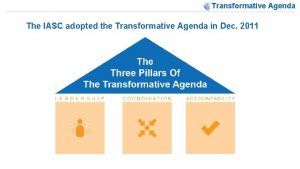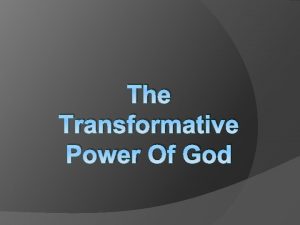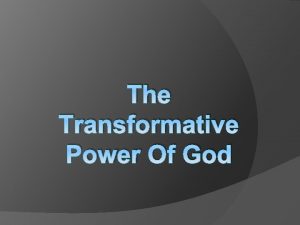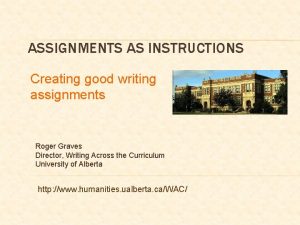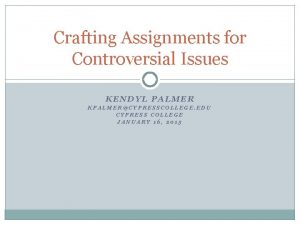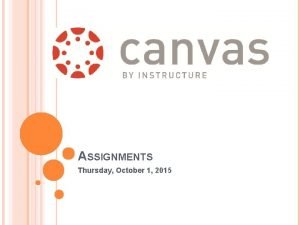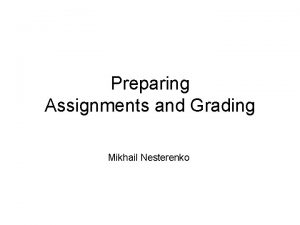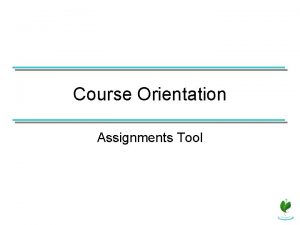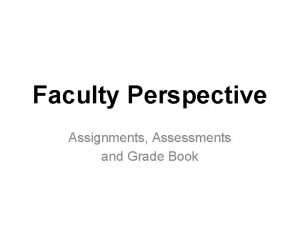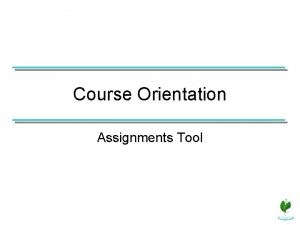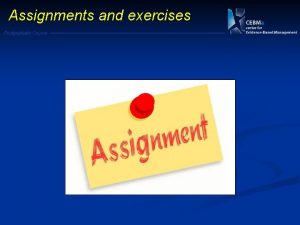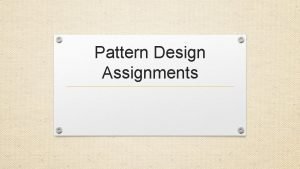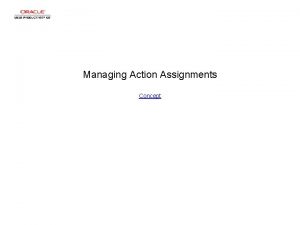Crafting Transformative Writing Assignments HOW TO MAKE WRITING



















- Slides: 19

Crafting Transformative Writing Assignments HOW TO MAKE WRITING WORK FOR YOU AND YOUR STUDENTS A SALON BY TRISTAN STRIKER, IRT 2015

Reflection Time! Question 1: What was your favorite or most memorable writing assignment in your career as a student? Question 2: What was your least favorite writing assignment?

Going Deeper: Question 1 a: Why does that particular assignment stand out as your favorite? What How made it effective? did it motivate you to write and to write well? How did it allow you to grow as an intellectual and a person?

We Have To Go Deeper (Inception) Question 2 a: Why did you remember this assignment as the one that gave you the most resistance? Why did you struggle with it? What do you feel could have been done more effectively? What was the assignment missing?

Putting it all together What, to you, is the purpose of writing in the classroom? How does writing help learning? Does writing have a place in all content classrooms? How do I, as an educator, make writing work for me and my pedagogy? How do I make it work as a transformative educator? How do I make writing assignments work for my students?

So why do we write? GOING BEYOND COMMUNICATION

Why do we write? Communication Demonstration of knowledge Or Critical thinking Thinking through (? )

How can writing help learning happen? How has writing helped you in your educational career? Is it just about writing papers?

Where does writing happen in the classroom? Note-taking Journaling E-mail writing Dialoguing with a text Taking an exam Writing a paper Anywhere else? ?

How will writing fit into your classroom? Will you just have students write in papers and on exams? How can you harness the writing students are already doing (named in the previous slide) and make it a productive and transformative space?

Scaffolding Please look up the word “scaffold” How could this term apply to creating writing assignments?

How to scaffold Principle 1: Every assignment works with and builds towards a larger goal, like a research paper Principle 2: Build in low-stakes and formal writing throughout the semester Principle 3: Use different writing applications to allow students to enter the beautiful science of writing (Trademarked to Professor Reginald A. Wilburn)

Principle 1: Building towards a larger goal Example: Assignment 1: Paragraph of interest Assignment 2: Annotated Bibliography 3: Book/article review 4: Prospectus 5: First Draft 6: Second Draft 7: Final Research Paper 8: Revisions

Principle 2: Low-Stakes Writing Low-Stakes writing means providing students with opportunities to practice the actual act of writing without the pressure of heavily weighted grades Example: note-taking, dialoguing with texts, response papers, journaling, book reports, paper drafts, etc.

Principle 3: Diverse writing methodologies By having several aspects of writing built into the larger scaffolded assignment, you allow students to use what they already know to demystify the writing process Example: Letter-writing/e-mailing and posting to social media are particularly useful to get students to think about the importance of audience

How does scaffolding benefit students? Slows down the process Accounts for different levels of experience Creates many different sites where students can ask questions and where you can offer support Students see the progressive nature of writing Students learn to value the power of revision Students start the writing process early, thereby lowering instances of procrastination

So what’s in it for me? Better able to keep track of student ability, progress, and needs throughout the semester Low-stakes grading not as involved and arduous as formal grading Students stay more engaged through consistent evaluation and labor (the panopticon works!) Your formal writing assignments and final projects WILL be better Students will thank you

How is this transformative? How can scaffolding and low-stakes writing create a more democratic/transformative/humanizing/liberatin g classroom space? https: //tomakeaprairie. wordpress. com/2014/08 /19/when-is-a-scaffold-not-a-scaffold/

Practicing what you preach students often feel alienated most outside of the classroom doing their writing assignments Depending on where you end up, you may teach students of varying experiences with ideas and language Scaffolding opens up a space for this diversity of experience, for “oppositional consciousness, ” in the classroom by creating spaces for this consciousness to grow naturally and safely How do you envision using writing in your classroom?
 Scenario the deputy incident commander will be replacing
Scenario the deputy incident commander will be replacing Economic naturalist examples
Economic naturalist examples Mertens transformative paradigm
Mertens transformative paradigm Transformative agenda meaning
Transformative agenda meaning Massive transformative purpose examples
Massive transformative purpose examples Transformative resistance
Transformative resistance Copyright transformative vs. derivative
Copyright transformative vs. derivative Institute for transformative technologies
Institute for transformative technologies Transformative paradigm definition
Transformative paradigm definition Operation transformation process
Operation transformation process Concurrent transformative design
Concurrent transformative design Transactional leadership vs transformational leadership
Transactional leadership vs transformational leadership Conversion process in operations management
Conversion process in operations management Sexual attraction
Sexual attraction Crafting and executing strategy in strategic management
Crafting and executing strategy in strategic management Crafting the service environment
Crafting the service environment Crafting a compiler
Crafting a compiler Crafting media messages
Crafting media messages Points of parity and points of difference
Points of parity and points of difference Dimensions of the service environment
Dimensions of the service environment
